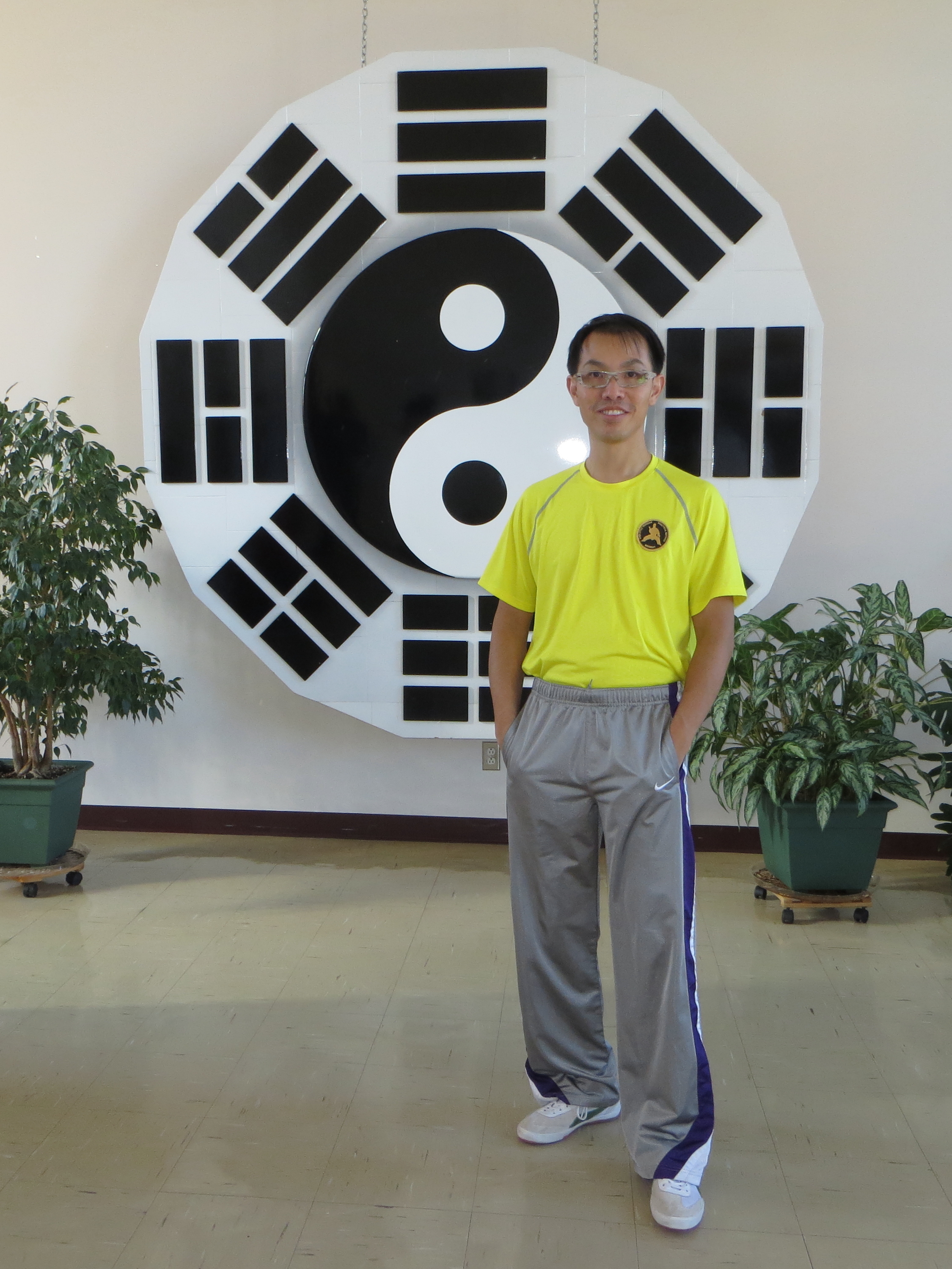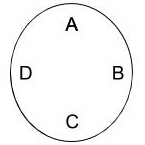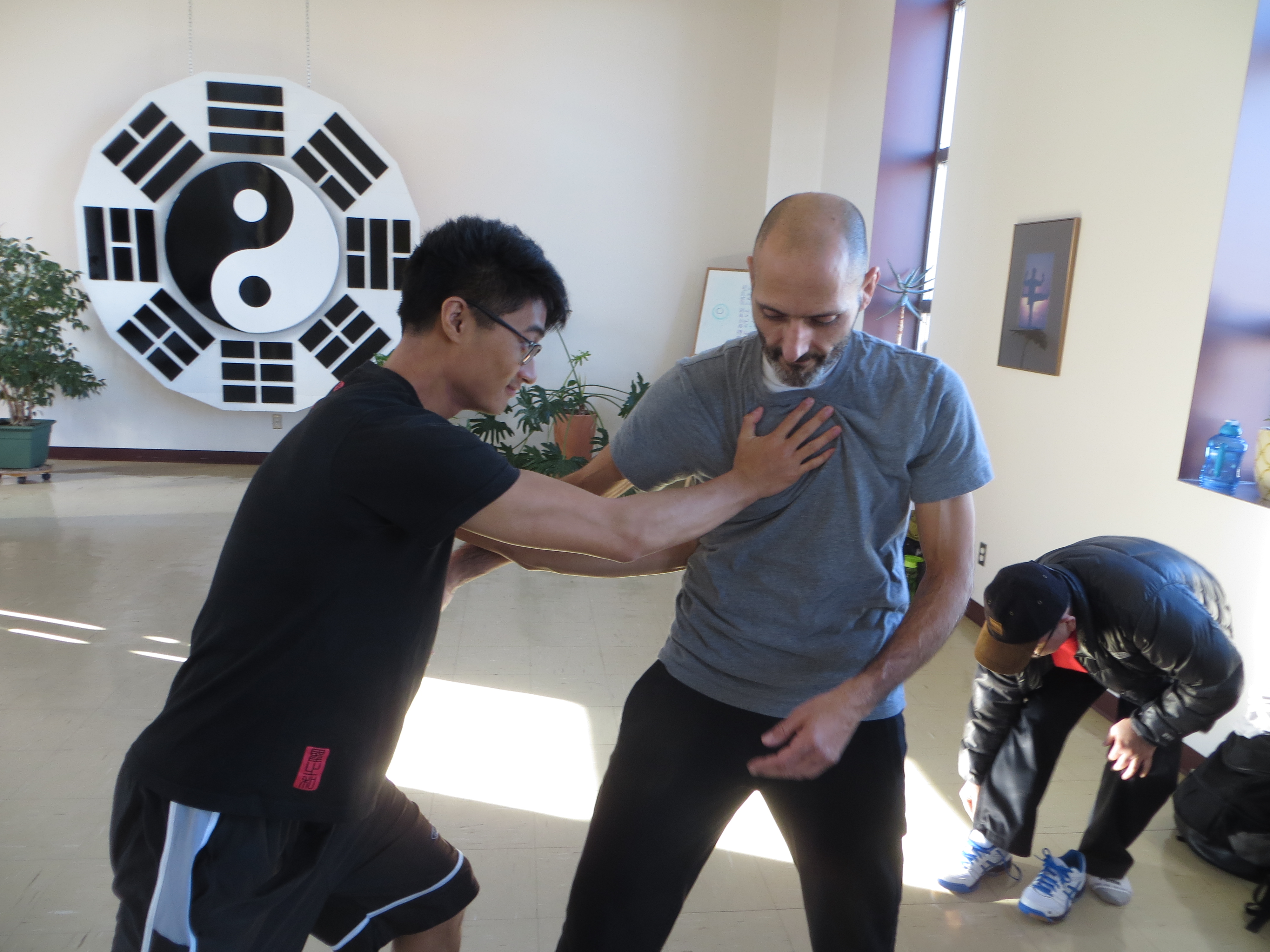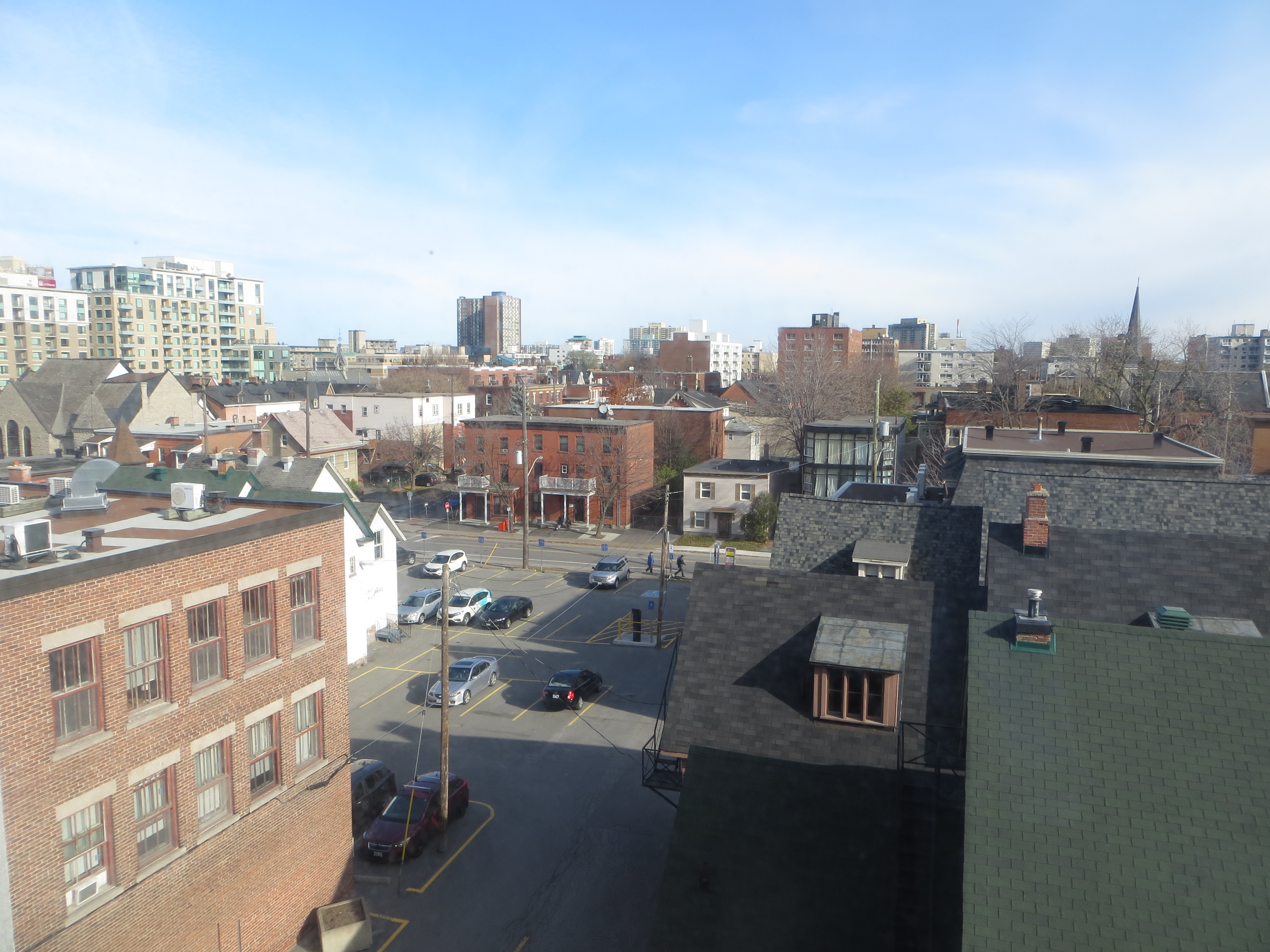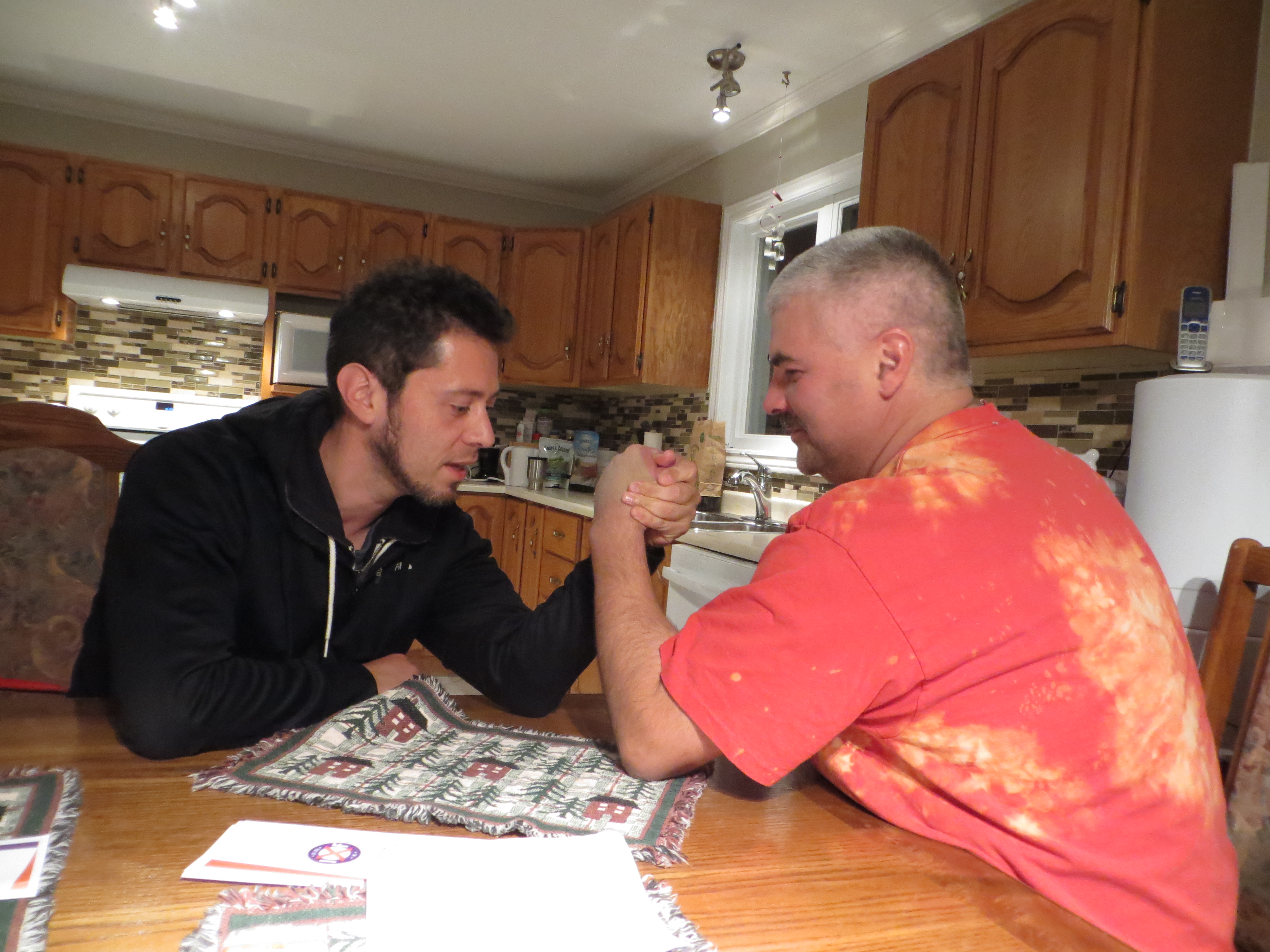In taijiquan, we often hear people refer to a circle, drawing a circle, or being rounded. The essence of a circle is rotation. It is by rotation that a dot on the surface of any object can draw a circle. A sphere or ball is the 3D extension of a circle. A circle also has the characteristic of a loop, where there is no beginning or end, in the other words, anywhere can be the beginning which can then be the end. To complete a rotation, there is a one-way path from beginning to end, and there is no going backwards on the same path, otherwise, it is equivalent to nothing happens at all.
Due to the way a human is built, we cannot perform a true rotation. What can be achieved is an approximation of it, and we can perform a portion of a rotation at a time. In order to perform a full rotation, switching is required. Switching can refer to switching of pivots (non-moving parts) or switching of moving parts.
In Figure 1, line AB rotates around point B to become line CB. Line CB moves laterally to become line YC. Y becomes the new fixed point. Line CY rotates around Y to become ZY. This represents a full rotation by having two action halves. This is the S-curve often referred by Master Chen Zhonghua. It marks the way in which the human body performs a circle. Note that this is also the taiji symbol.
Figure 2 is similar to Figure 1 except no lateral move, and there is a direct switching from point B to point Y as the non-moving point.
Figure 3 also represents a full rotation, although it may not look like one at first glance. There are two halves. In this case, the circle is smaller, and in fact, it is more like an ellipse.
Figure 4 represents a full rotation that is further broken down. Switching of pivots is depicted here (points B,C,D,E,V,W,X,Y). For simplicity of the drawing, 8 equal pieces are used, however in reality, they do not need to be equal in size. The overall shape is also asymmetric. This is a 2D representation. Imagine how crooked it will look if the pivots are not located on the same plane.
In order for each portion of a rotation to continue from the last one, what is gained in each portion must be maintained/kept, so that position becomes the starting point of the next one. Let’s take the right-side positive circle in Practical Method as an example. In the most basic version, we do a 3-count circle:
- In with elbow
- Turn with waist
- Out with hand
After the first count, the elbow must touch the side-ribs. In the 2nd count, while the elbow is touching the ribs, pushing the right foot to the ground and rotating the right kua with the left kua being the pivot cause the waist to turn to the left. This is the first half of the circle. For the 3rd count, using the right kua as the pivot, pushing the left foot to the ground and rotating the left kua causes the right hand to go out as part of the geared action. This completes the 2nd half of the circle. Note that the waist turn is only going to the left in one direction throughout the entire circle. There is no reset.
Let’s look at only the relationship between the elbow and the hand. The in-with-elbow-no-hand is the first half of a circle, and the out-with-hand-no-elbow is the 2nd half of a circle. This is an example of switching of moving parts. After the in-with-elbow-no-hand, the elbow continues to go inwards (no loss of compression towards the dantien) while the out-with-hand-no-elbow takes place maintaining the tension between hand and elbow.
The four figures above show different representations of the S-curve that involve physical actions. Master Chen has also shown before that having a particular physical shape in the body with various stretches can allow energy to travel in a rotating fashion without any obvious external movements. That is another topic for the future. At the mean time, keep practicing.
The four figures above show different representations of the S-curve that involve physical actions. Master Chen has also shown before that having a particular physical shape in the body with various stretches can allow energy to travel in a rotating fashion without any obvious external movements. That is another topic for the future. At the mean time, keep practicing.

